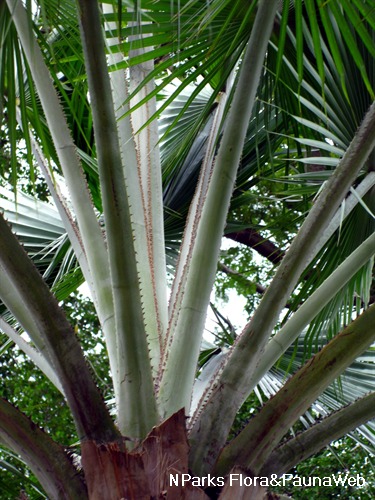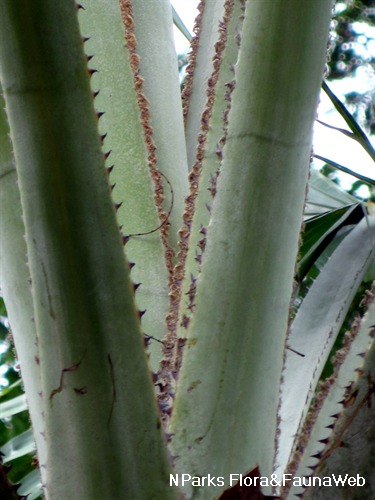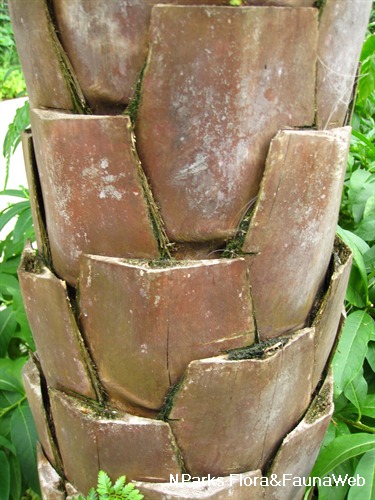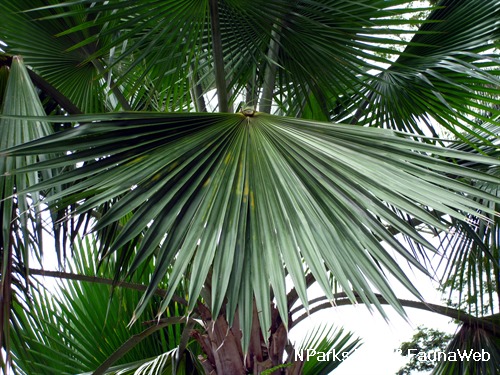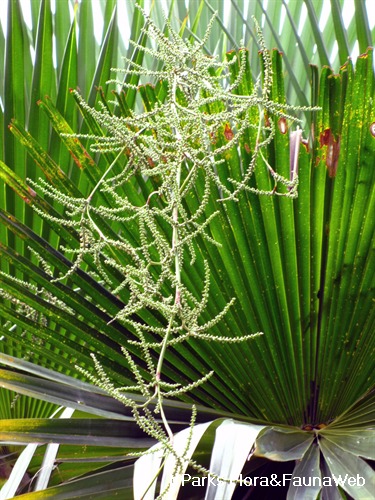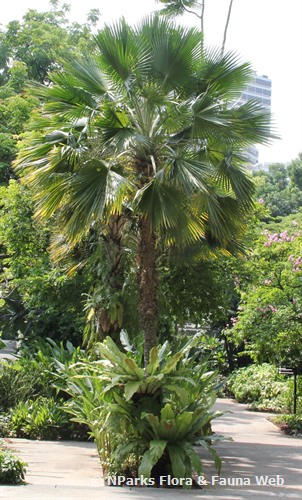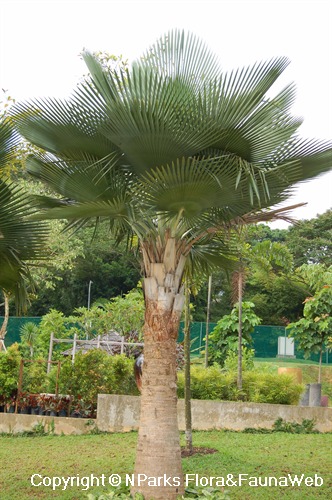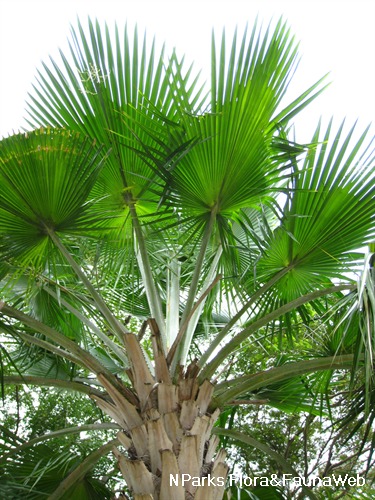
Back
Copernicia hospita
| Family Name: | Arecaceae (Palmae) |
| Synonyms: | Copernicia yarey var. yarey, Copernicia molineti var. cuneata, Copernicia humicola, Copernicia molineti, Copernicia pauciflora, Copernicia yarey, Copernicia textilis, Copernicia clarensis, Copernicia curtissii |
| Common Name: | Cana, Guano Hediondo, Guano Espinoso, Guano, 奇异蜡棕 |
Name
Classifications and Characteristics
| Plant Division | Angiosperms (Flowering Seed Plants) (Monocotyledon) |
|---|---|
| Plant Growth Form | Palm (Solitary Habit) |
| Mode of Nutrition | Autotrophic |
| Maximum Height | 7.5 m |
Biogeography
| Native Distribution | Cuba |
|---|
Description and Ethnobotany
| Growth Form | A majestic, solitary, medium-sized palm with a large crown of waxy, bluish-green, palmate fronds supported by a smooth, columnar trunk. It is often mistaken as Bismarckia nobilis 'Silver'. |
|---|---|
| Trunk | Trunk solitary, smooth, grey, ringed lightly with old leaf scars and petticoat of dead leaves at the top. |
| Foliage | Fronds fan-shaped, bluish-green/silverish-green, waxy, 18 to 30 segments, visibly wedge-shaped, up to 2 m long and 60 cm wide. |
| Others - Plant Morphology | Flower: Inflorescences brown, up to 1.8 m long, arising from among the fronds. Fruit: Fruits globose, ripening from green to black, about 1 cm in diameter. |
| Cultivation | It prefers full sun and grows well in suntrap locations. It thrives in moist soil with well-drained soils, and is highly tolerant of drought once established. Propagate by seeds, which germinate readily withinin 2 to 4 months. |
| Etymology | The genus epithet 'Copernicia' is named after Nicolaus Copernicus (1473 - 1543), a famed Polish astronomer, while its species epithet 'hospita', means 'hospitable' in Latin, which is believed to be referred as being a hospitable palm, welcoming a wide variety of birds. |
| Ethnobotanical Uses | Others: Leaves are traditionally woven into hats, panniers (load-carriers) and baskets. Leaves are also used in thatching of roofs. Its hard and durable stems are used extensively in the making of fence posts. |
Plant Care and Propagation
| Light Preference | Full Sun |
|---|---|
| Water Preference | Moderate Water |
| Plant Growth Rate | Moderate |
Foliar
| Mature Foliage Colour(s) | Green |
|---|---|
| Foliar Shape(s) | Palm Fronds (Fan / Costapalmate) |
| Leaf Area Index (LAI) for Green Plot Ratio | 2.5 (Palm - Solitary) |
Non - Foliar and Storage
| Trunk Type (Palm) | Solitary Habit, Aboveground |
|---|
Floral (Angiosperm)
| Flower Colour(s) | Brown |
|---|
Fruit, Seed and Spore
| Mature Fruit Colour(s) | Black |
|---|
Image Repository
Others
| Master ID | 29099 |
|---|---|
| Species ID | 3412 |
| Flora Disclaimer | The information in this website has been compiled from reliable sources, such as reference works on medicinal plants. It is not a substitute for medical advice or treatment and NParks does not purport to provide any medical advice. Readers should always consult his/her physician before using or consuming a plant for medicinal purposes. |

